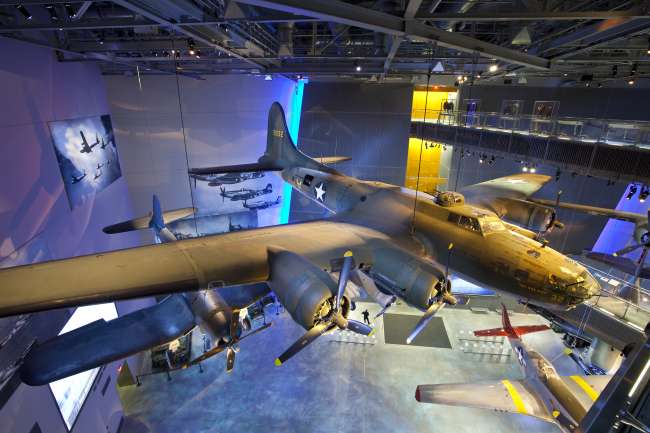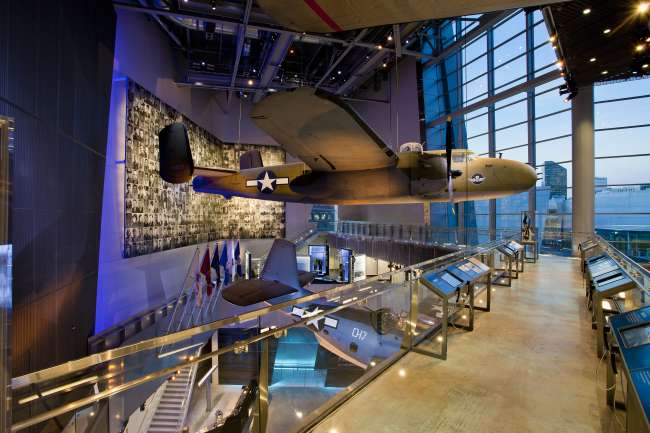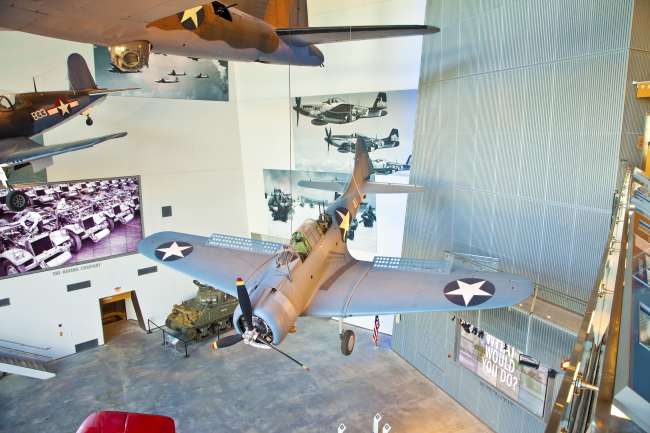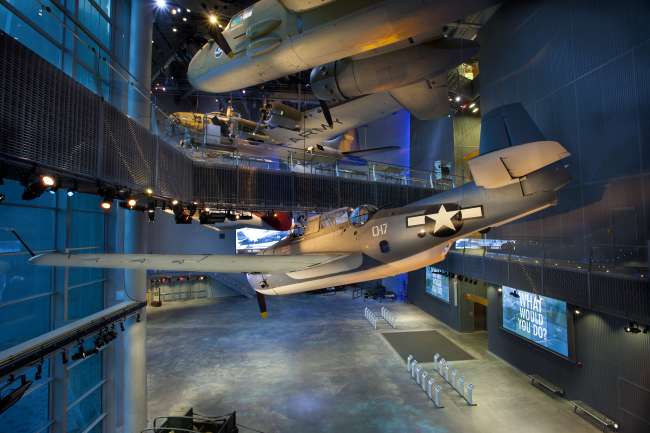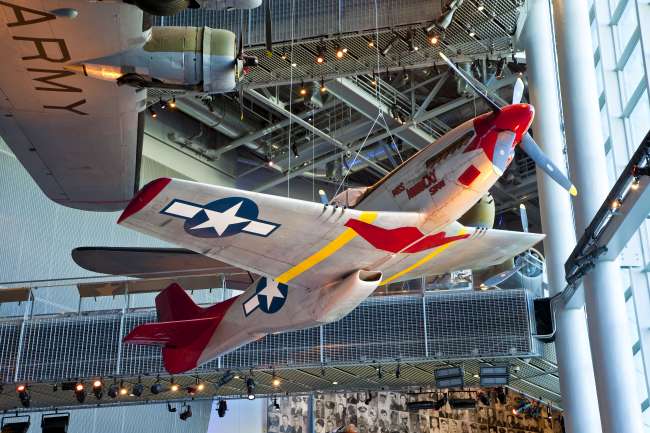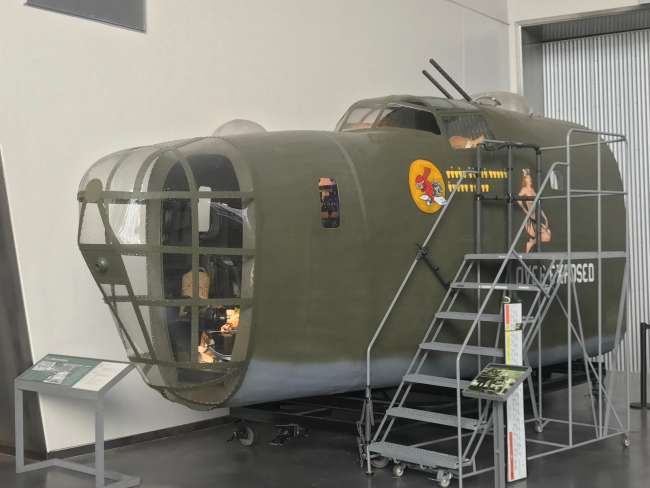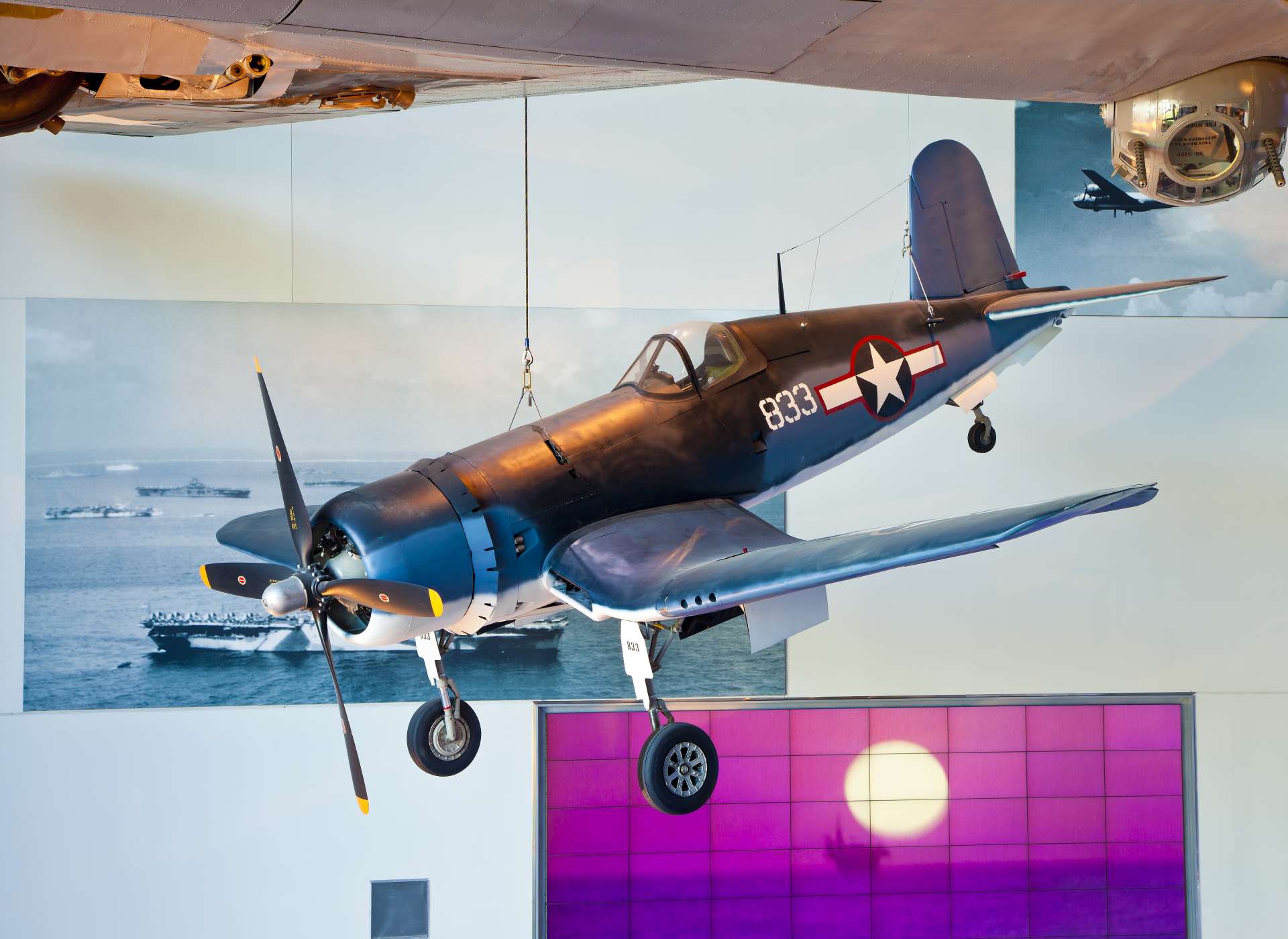
Development of the F4U Corsair began in early 1938, headed-up by Vought Aircraft’s Chief Engineer, Rex Biesel. By May 1940, Vought had produced a prototype; the new fighter’s inverted gull wings gave the aircraft an unmistakably recognizable face when viewed head-on, and were designed to provide ground clearance for the massive 13-foot propeller. On the Corsair’s maiden flight, she broke the speed record for a single-seat fighter aircraft by exceeding 400 miles per hour in level flight. The Navy was sold on the speedy fighter and ordered Vought to begin production. Nearly 13,000 examples would be produced by the end of the F4U’s production run in 1952.
The F4U Corsair entered combat in 1943, and gave Allied naval aviators a winning edge against their opponents. Renowned for its speed, ruggedness, and firepower, the Corsair excelled as both a fighter and an attack aircraft in support of ground forces. The F4U-4, with its more powerful engine, was the last Corsair variant to see service during World War II.
F4U-4 Corsair
Due to the urgent need for fighter squadrons in the Solomon Islands area in the summer of 1943, Marine Fighting Squadron 214 (VMF-214) was unorthodoxly cobbled together in theater, utilizing replacement pilots intended for other squadrons. Under the command of Maj. Gregory “Pappy” Boyington, the self-proclaimed “Black Sheep” of VMF-214 shot down 97 Japanese aircraft and damaged another 103 during the squadron’s two six-week tours of duty, making the Black Sheep one of the highest scoring flying outfits in the South Pacific at that time.
The Corsairs flown by VMF-214 were seldom flown by the same pilot every day. In fact, Pappy would always fly the plane in the poorest condition on every mission, just so a pilot under his command wouldn’t have to do so. This aircraft is painted in the markings of one of the aircraft known to have been flown by the squadron.
Made possible through a gift from Pratt & Whitney
2011.252
Statistics
Type: Fighter/Bomber
Production
Date Introduced: 1944
Manufacturer: Chance Vought
Number Produced: 2,300+
Specifications (F4U-4)
Crew: 1 (Pilot)
Wingspan: 41 feet
Length: 34 feet
Maximum Speed: 453 miles per hour
Cruising Speed: 215 miles per hour
Maximum Range: 900 miles
Engine: Pratt & Whitney R-2800-18W (up to 2,450 hp)
Maximum Load: 4,000 pounds of bombs or eight 5-inch rockets
Armament: Six .50 caliber machine guns or four 20mm cannons
WARBIRDS
-
Boeing B-17E Flying Fortress
Developed as a strategic bomber in the 1930s, the rugged B-17 was used in every theater in World War II, and became legendary for its ability to sustain heavy damage in battle while maintaining self-sufficient firepower.
-
North American B-25 Mitchell
The B-25 bomber soldiered in every theater of war, excelling in multiple roles, chiefly as a ground-attack aircraft later in the war. They gained fame in April 1942 in the daring Doolittle Raid on Tokyo.
-
Douglas SBD Dauntless
The US Navy’s primary dive-bomber at the war’s start, the Douglas SBD Dauntless earned its reputation—and helped earn victory—at the 1942 Battle of Midway, sinking four Japanese carriers.
-
General Motors TBM Avenger
Despite disappointing action at Midway, the Avenger served as the US Navy’s primary torpedo bomber, effectively interdicting enemy shipping and delivering ordnance on enemy positions throughout the Pacific.
-
-
Consolidated B-24 Liberator
The B-24 Liberator was a powerful symbol of US industrial might, with more than 18,000 produced by the war’s end. Liberators flew faster, higher and farther than the older B-17, thanks to greater fuel capacity and an innovative low-drag wing design.
